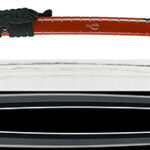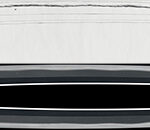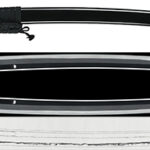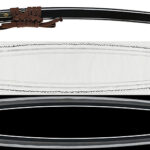Ordering number:13301
Tachi: in Shirasaya (NBTHK Tokubetsu Hozon Token)
Signature: Mumei (Attributed to Rai Kunizane).
無銘(来国真)
We classify swords into four categories based on the workmanship of the swordsmith: Saijyo Saku, Jyojyo Saku, Jyo Saku, and Regular Saku.
This work is ranked as Jyojyo Saku for a Mumei attributed to Rai Kunizane.
Polishing: Completed with high-quality Jyojyo-grade polishing.
Habaki: silver single
Blade Length: 70.4 cm (27.72 in).
Curvature: 1.0 cm (0.39 in).
Mekugi Holes: 2.
Width at Base (Motohaba): 3.00 cm (1.18 in).
Width at Tip (Sakihaba): 1.97 cm (0.78 in).
Thickness (Kasane): 0.72 cm (0.28 in).
Sword Weight: 777 g.
Era: Nanbokucho period, around the Bunna era (1352).
Shape: A broad blade with a deep curvature and an extended kissaki, presenting a well-balanced and elegant form.
Jigane: A refined ko-itame hada, showing a clear grain pattern with visible chikei.
Hamon: Based on suguha, featuring small ashi, a rounded boshi with midarekomi, and a sharp turn at the tip (haki-kakeru).
Features: A dignified sword with a blade length of 70.4 cm. The shinogi-ji reveals a mix of itame, mokume, and masame patterns, clearly visible and of high quality.
Aoi Art’s Comment: Rai Kunizane was the son of Rai Kunitoshi and is considered the younger brother of Rai Kunimitsu. His style is closely reminiscent of Rai Kunimitsu, and his works are of excellent craftsmanship.
Historical Context: A work from the early Nanbokucho period.
NBTHK Tokubetsu Hozon Token.
Aoi Art Estimation Paper
Whole Oshigata.
Price:1,200,000JPY
Order Form
Related Items:
 Katana: Mumei (attributed to Den Rai Kunitoshi)(NBTHK 37th Juyo Token)
Katana: Mumei (attributed to Den Rai Kunitoshi)(NBTHK 37th Juyo Token)
 Katana: Izumi Kami Rai Kinmichi(3rd Generation)(NBTHK Tokubetsu Hozon Token)
Katana: Izumi Kami Rai Kinmichi(3rd Generation)(NBTHK Tokubetsu Hozon Token)
 Katana:Mumei (Unsigned) [Attributed to Enju] (19th NBTHK Juyo Token)
Katana:Mumei (Unsigned) [Attributed to Enju] (19th NBTHK Juyo Token)
 Katana: Mumei(judged as Den Rai Kunimitsu)(NBTHK Tokubetsu Hozon Token)
Katana: Mumei(judged as Den Rai Kunimitsu)(NBTHK Tokubetsu Hozon Token)
 Katana: Hizen Koku Tadayoshi (8th generation)(NBTHK Tokubetsu Hozon Token)
Katana: Hizen Koku Tadayoshi (8th generation)(NBTHK Tokubetsu Hozon Token)
 Katana:Mumei (attributed to Yoshimitsu)(50th NBTHK Juyo Token)
Katana:Mumei (attributed to Yoshimitsu)(50th NBTHK Juyo Token)






